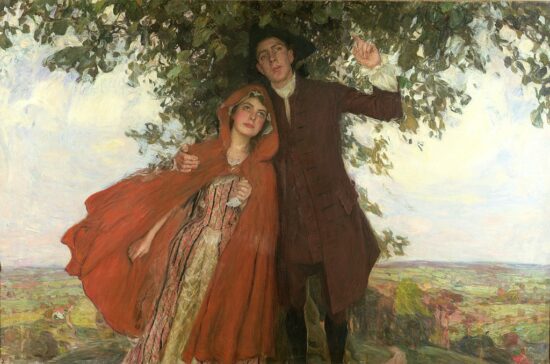Introduction
Tess of the d’Urbervilles is a novel written by Thomas Hardy, first published in 1891. Set in rural England during the late 19th century, the novel tells the tragic story of Tess Durbeyfield, a young woman from a poor family who becomes entangled in a web of social injustice, love, and betrayal. This article provides a comprehensive analysis of the novel, examining its plot and storyline, characters, themes, and symbols, writing style, setting and atmosphere, historical context, and its impact and reception in literature.
Plot and Storyline
Tess of the d’Urbervilles follows the life of Tess Durbeyfield, a naive and innocent girl who is sent by her family to claim kinship with the wealthy d’Urberville family. She is employed at the d’Urberville mansion, where she encounters Alec d’Urberville, a wealthy and manipulative young man who seduces her. The resulting affair leads to Tess’s pregnancy and subsequent abandonment by Alec.
Returning to her home village, Tess gives birth to a sickly child who dies in infancy. Seeking a fresh start, she finds work at a dairy farm called Talbothays, where she meets and falls in love with Angel Clare, a kind and idealistic gentleman. Tess hesitates to reveal her past to Angel, fearing his rejection, but eventually confesses her previous relationship with Alec. Shocked and disillusioned, Angel leaves Tess, seeking solace in Brazil.
Tess is left devastated and alone, eventually reuniting with Alec, who promises to take care of her. However, when Angel returns to England and realizes the depth of his love for Tess, he seeks a reconciliation. Tragically, their reunion is short-lived, as Tess is arrested and executed for the murder of Alec, who had pursued her relentlessly. The novel concludes with Angel’s remorse and his promise to be with Tess in spirit.
Characters
Tess Durbeyfield is the central character of the novel, representing innocence, purity, and victimhood. She undergoes a transformation from a naive girl to a tragic figure, shaped by the circumstances and society she encounters.
Alec d’Urberville embodies the themes of manipulation, lust, and power. He symbolizes the aristocratic class’s exploitation of the lower classes and is responsible for Tess’s downfall.
Angel Clare represents idealism and youthful passion. However, his inability to accept Tess’s past and his rigid adherence to societal norms contribute to her tragedy.
Themes and Symbols
Tess of the d’Urbervilles explores several themes, including the destructive power of social class, the double standards of morality, and the oppression of women in Victorian society. The novel also delves into the consequences of sexual desire, the conflict between nature and civilization, and the inevitability of fate.
Symbolism plays a significant role in the novel. The d’Urberville name symbolizes a false sense of aristocracy, while the image of Tess as a pure and innocent “child of nature” represents her vulnerability and victimhood.
Writing Style
Thomas Hardy’s writing style is characterized by its poetic and descriptive nature. He employs vivid imagery and rich metaphors to evoke a sense of the rural landscape and the characters’ emotional states. Hardy’s use of dialect and regional speech adds authenticity to the narrative and reflects the social and cultural context of the story.
Setting and Atmosphere
The novel is primarily set in the fictional county of Wessex, which encompasses the rural landscapes of southwestern England. Hardy’s detailed descriptions of the countryside create a vivid sense of place and contribute to the overall atmosphere of the novel. The juxtaposition of the serene natural world with the harsh realities of Tess’s life adds to the tragic tone of the story.
Historical, Social, or Political Context
Tess of the d’Urbervilles is set during the Victorian era, a time marked by significant social and cultural changes. Hardy critiques the rigid social hierarchy, the expectations imposed on women, and the hypocrisy of Victorian morality. The novel reflects the tensions between traditional rural values and the encroachment of industrialization and modernity.
Impact and Reception
Tess of the d’Urbervilles received mixed reviews upon its publication. Critics were divided over its frank treatment of sexuality and its portrayal of a fallen woman. However, the novel has since gained recognition as a literary masterpiece and a powerful critique of Victorian society. It has influenced subsequent works of literature and has been adapted into various stage plays, films, and television series.
How does Thomas Hardy use symbolism in Tess of the d’Urbervilles?
Answer: Thomas Hardy employs symbolism throughout Tess of the d’Urbervilles to enhance the novel’s themes and deepen the reader’s understanding of the characters and their circumstances. One prominent symbol is the d’Urberville name itself, which represents a false sense of aristocracy and highlights the illusion of social status. Tess’s association with the name brings both opportunities and tragedy, underscoring the theme of social class and its impact on her life.
Another significant symbol is Tess as a “child of nature.” Her connection to the natural world and her purity symbolize her vulnerability and victimhood. This symbolism is particularly evident in the novel’s descriptions of the natural landscape, which serve as a contrast to the harsh realities of Tess’s existence.
Additionally, the color red is a recurring symbol in the novel. It represents passion, desire, and the destructive forces that impact Tess’s life. For example, the red color of the strawberries she picks at Talbothays foreshadows her ill-fated relationship with Alec d’Urberville.
How does Tess of the d’Urbervilles reflect the historical, social, and political context of the Victorian era?
Answer: Tess of the d’Urbervilles provides a vivid portrayal of the historical, social, and political context of the Victorian era. The novel critiques the rigid social hierarchy and the treatment of women, shedding light on the oppressive nature of Victorian society.
In terms of the historical context, the novel captures the tensions between traditional rural values and the encroachment of industrialization. Hardy portrays the impact of modernity on the rural landscape and the disruption it brings to the lives of the characters. The enclosures of land, the shift from agriculture to industry, and the resulting social and economic changes are all reflected in the novel.
Socially, Tess of the d’Urbervilles explores the double standards of morality imposed on women. Victorian society placed a heavy burden on women to uphold ideals of purity and chastity, yet Tess’s experiences highlight the hypocrisy and unfairness of these expectations. The novel challenges societal norms and exposes the vulnerability of women in a patriarchal society.
Politically, the novel raises questions about social justice and the unequal distribution of power. It critiques the aristocracy’s exploitation of the working class and highlights the injustices faced by individuals like Tess, who are trapped by their social circumstances.
What impact did Tess of the d’Urbervilles have on literature and subsequent works?
Answer: Tess of the d’Urbervilles has had a significant impact on literature and continues to be recognized as a literary masterpiece. The novel’s frank treatment of sexuality and its exploration of complex moral dilemmas were groundbreaking for its time. It paved the way for more realistic and psychologically complex portrayals of characters and themes in literature.
Tess of the d’Urbervilles also influenced subsequent works by other authors. Its themes of social injustice, the struggles of women, and the conflict between individual desires and societal expectations resonated with writers who sought to challenge societal norms and conventions. The novel’s exploration of the human condition, fate, and the consequences of desire and betrayal have inspired generations of writers to delve into similar themes.
Furthermore, Tess of the d’Urbervilles has been adapted into various stage plays, films, and television series, further cementing its cultural significance. These adaptations have brought Hardy’s work to a wider audience and ensured its enduring presence in popular culture.
Overall, Tess of the d’Urbervilles has left a lasting impact on literature, inspiring critical analysis, further exploration of its themes, and adaptations across different mediums. Its powerful storytelling and thought-provoking themes continue to captivate readers and contribute to ongoing discussions about morality, gender, and societal norms.
Final Conclusions
Tess of the d’Urbervilles is a poignant and tragic novel that explores themes of social injustice, sexuality, and the human condition. Thomas Hardy’s masterful storytelling, evocative language, and critique of Victorian society make it a timeless work of literature. The novel’s enduring impact on readers and its exploration of complex moral dilemmas ensure its place among thegreat literary works of all time. Tess Durbeyfield’s journey serves as a powerful reminder of the injustices faced by women and the consequences of societal expectations. Through its compelling characters, vivid imagery, and thought-provoking themes, Tess of the d’Urbervilles continues to captivate readers and spark important conversations about morality, love, and the human experience.
Sources
Tess of the d’Urbervilles | Introduction & Summary | Britannica






